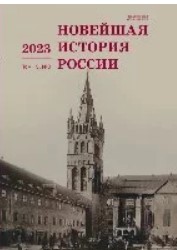Официальный образ Советской власти в России (октябрь 1917 — декабрь 1929 г.)
The Official Image of Soviet Authority in Russia (October 1917 — December 1929)
Author(s): V. I. ShishkinSubject(s): Political history, Government/Political systems, Pre-WW I & WW I (1900 -1919), Interwar Period (1920 - 1939), History of Communism
Published by: Издательство Исторического факультета СПбГУ
Keywords: Russia; Soviet power; Soviet; image; congress; Bolsheviks; dictatorship of the proletariat; Socialism;
Summary/Abstract: The article analyzes the formation of the official image of the Soviet authority from its establishment at the Second All-Russian Congress of Soviets of Workers’ and Soldiers’ Deputies until the end of the 1920s when the NEP was basically over. The author grounds the study on the fact that the supreme authority directly controlled the completion of this task, but its composition and subordination during the studied period changed significantly due to the rise of emergency state bodies and the governing structures of the party to the highest echelon of power, as well as gradual occupation by Communist party’s bodies of dominant positions over the Soviet ones. The article shows what factors influenced the content and structure of the image of authority and how it changed. The author believes that three key factors shaped the image of Soviet authority the most: the theory of Marxism, mainly the doctrine of the dictatorship of the proletariat; the views of the Bolshevik political elite, primarily the leader of the Bolsheviks, V. I. Lenin and in the late 1920s, the General Secretary of the Central Committee of the AUCP(b), I. V. Stalin; the objective international and domestic military-political and socio-economic situation in which Soviet Russia found itself. During the above period, the role of the first factor gradually decreased; the views of V. I. Lenin began to be praised in some ritual manner. In the second half of the 1920s, the pragmatic views of the Bolshevik elite became decisively important, which at first were diverse, but by the end of the decade were completely determined by I. V. Stalin, who identified himself as the successor of V. I. Lenin and the new leader of the party and the whole country. The author develops an idea that, due to the above reasons, the image of the Soviet authority was not stable.
Journal: Новейшая история России
- Issue Year: 13/2023
- Issue No: 44
- Page Range: 621-647
- Page Count: 27
- Language: Russian

